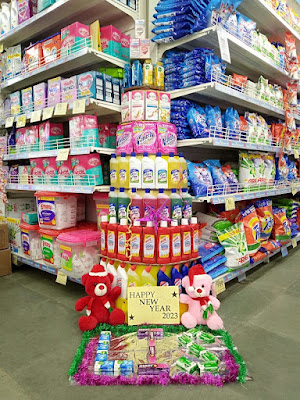Top 10 Retail KPIs You Must Monitor to Succeed
In today's rapidly changing retail environment, data-informed decision-making is the secret to long-term success. Monitoring the right Key Performance Indicators (KPIs) allows brands to track store performance, find areas of improvement, and streamline operations. With a small boutique or a big retail chain, keeping an eye on these critical KPIs will keep you one step ahead of the competition.
1. Sales Per Square Foot
Sales per square foot is an important measure that determines how effectively a store is making use of its space to earn revenue. A greater number suggests that the product placement, merchandising techniques, and store layout are operating efficiently.
2. Conversion Rate
Having foot traffic is desirable, but more important is how many shoppers actually turn into customers. A conversion rate shows the store's capability to make browsers purchase. Having a lot of foot traffic and low conversion means there is probably something wrong with the prices, products offered, or service provided. Brands can fix this KPI by maximizing in-store experiences, training employees, and maximizing product location.
3. Average Transaction Value (ATV)
Average Transaction Value (ATV) is the average value spent by a customer in a transaction. An increasing ATV indicates successful upselling and cross-selling. Brands can improve this KPI by packaging products, running promotions for a limited time, or educating sales staff to suggest complementary products.
4. Gross Margin Return on Investment (GMROI)
Retail profitability is not merely a function of high sales—it's also a matter of how effectively a store makes a profit out of its inventory. GMROI (Gross Margin Return on Investment) assists retailers in assessing if their investment in inventory is resulting in profitable returns. If this metric is low, it can be a signal of overstocking, heavy markdowns, or ineffective product assortment.
5. Inventory Turnover Rate
Inventory turnover captures the rate at which a retailer sells and restocks items during a specified period. A high rate implies vigorous demand and effective inventory management, while a low rate could indicate slow-moving stock. Brands can improve this KPI through improved demand planning, dead stock reduction, and supply chain rationalization.
6. Customer Retention Rate
It is essential to bring in new customers, but even more so to keep the current ones. A high Customer Retention Rate is a sign of brand loyalty and repeat customer satisfaction. Brands can enhance retention by providing loyalty schemes, maintaining top-notch customer service, and tailoring shopping experiences using data analysis.
7. Foot Traffic & Dwell Time
Foot traffic captures the volume of customers entering a store, and dwell time measures the duration for which they stay. Strong foot traffic reflects brand attraction, but if customers are leaving too fast, it can be an indication of weak engagement or a failing store layout. Retailers can boost dwell time by enhancing the store atmosphere, providing interactive product showcases, and attracting customers with in-store experiences.
8. Sell-Through Rate
Sell-through rate measures the percentage of a product sold within a given time period against the stock available. This metric enables retailers to gauge which products are selling well and which may require markdowns or promotions to increase sales. A high sell-through rate is a sign of good inventory management and product demand forecasting.
9. Net Promoter Score (NPS)
Satisfied customer is the most effective salesperson for a store. Net Promoter Score (NPS) gauges customers' loyalty as well as recommending behavior. Higher NPS translates to better customer experiences, but low NPS can show room for service or product issues. Retailers may enhance NPS by listening to customers' opinions, mitigating pain areas, and streamlining services.
10. Return Rate
Returns affect the profitability of a store and can indicate product quality or customer dissatisfaction problems. A high return rate can reflect deceptive product descriptions, low quality, or incorrect sizing. By examining reasons for returns and making adjustments accordingly, retailers can reduce losses and enhance customer satisfaction.
Monitoring these critical KPIs gives retailers significant insights into optimizing operations, maximizing customer experience, and profit optimization. As the retailer remains attentive to, monitors, and continually improves upon these metrics, the retailer will make informed, data-driven choices leading to enduring success.
Want to take your brand’s retail game to the next level? Connect with Love In Store today!



Comments
Post a Comment